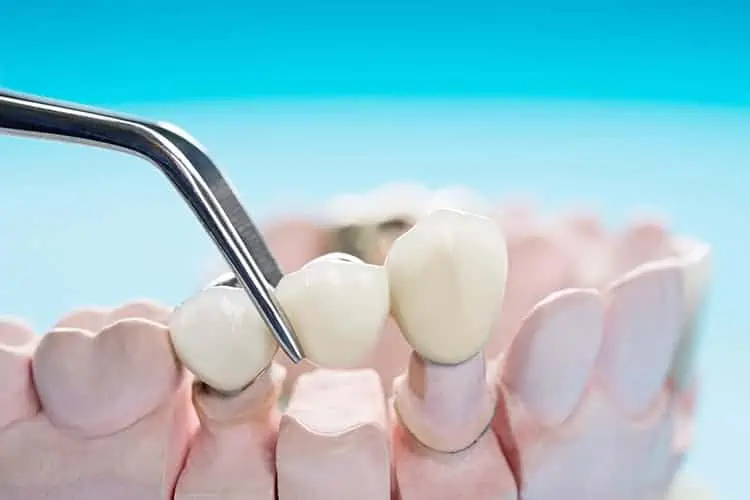dental crown and bridges
- Home
- Dental Crown and Bridges

WHAT PARTS OF THE TOOTH DOES A CROWN FIX?
Every tooth has the same layers, even though they come in different shapes and sizes. From outside in, these layers are the enamel, the dentin, the pulp, and the root. As long as the fracture or decay leaves some dentin to work with, the crown replaces the tooth’s former shape. In that case, your dentist will sculpt it a bit so it’s thin enough to accommodate a crown. If there’s no dentin to work with, an implant gets screwed into the jaw, leaving an artificial nub above the gumline to serve as the base for the crown. Either way, a crown fits over the artificial or dentin foundation, resembling the crown on a monarch’s head.
What is a Dental Bridge?
A dental bridge is a permanent appliance that replaces a missing tooth or missing teeth. It has several pieces that are fused together to fit into the open space where your tooth or teeth used to be. Dental bridges are an alternative to partial dentures. A bridge can help you eat and speak more effectively and also make your teeth look better. A dental bridge can be made of different materials, including gold, alloys, or porcelain. When replacing a front tooth, porcelain is most often used because it can be matched to your natural tooth color. This article will go over the different kinds of dental bridges. You will learn what to expect if you need to get a dental bridge placed, as well as the pros and cons of having a dental bridge.
Dental bridge types
There are four main types of dental bridges:
- traditional
- cantilever
- Maryland
- implant-supported
1.Traditional dental bridge
A traditional dental bridge consists of a false tooth or teeth being held in place by dental crowns that have been cemented onto each of the abutment teeth. A traditional bridge is the most popular type of dental bridge and can be used when you have natural teeth on both sides of the gap created by your missing tooth.
2.Cantilever dental bridge
Although similar to a traditional bridge, the pontic in a cantilever dental bridge is held in place by a dental crown that is cemented to only one abutment tooth. For a cantilever bridge, you only need one natural tooth next to the missing tooth gap.
3.Maryland dental bridge
Similar to a traditional bridge, Maryland dental bridges employ two natural abutment teeth, one on each side of the gap. However, while a traditional bridge uses dental crowns on the abutment teeth, a Maryland bridge uses a framework of either metal or porcelain that is bonded onto the backs of the abutment teeth.
Like a traditional bridge, a Maryland bridge can only be used when you have a natural tooth on each side of the gap caused by the missing tooth or teeth.
4.Implant-supported dental bridge
As the name implies, implant-supported bridges use dental implants as opposed to crowns or frameworks. Typically, one implant is surgically placed for every missing tooth, and these implants hold the bridge in position. If one implant for each missing tooth isn’t possible, the bridge may have a pontic suspended between two implant-supported crowns.
Considered the strongest and most stable system, an implant-supported bridge commonly requires two surgeries:
- one to embed the implants in the jawbone
- a second surgery to place the bridge
It can take a number of months for the procedure to be completely finished.

